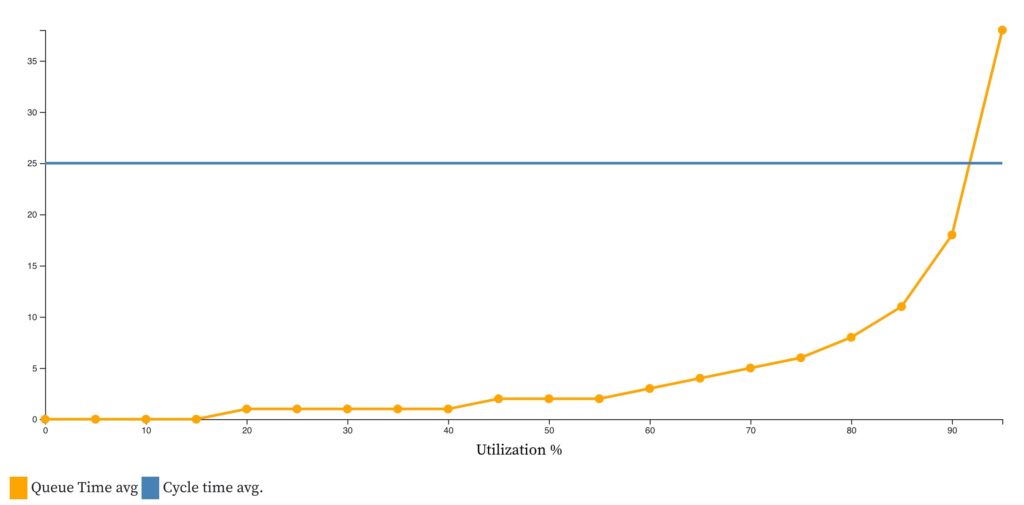In many organizations, the people who do the work are treated like economic resources (think: iron ore) and it’s felt that they have a price, and so must be utilized to maximize their value. Except these resources are actually human beings. Labelling it “human resources” is far more ironic than helpful.
Thinking of people as resources reduces them to common, replaceable parts. It also leads to the mindset that, to deliver the most value, they must always be busy. This is known as the Resource Utilization Trap. People aren’t machines or assembly lines, and if they always look busy, much of their work will be low value.
When individual busyness increases, a team suffers a number of problems:

- With the emphasis on busyness, quality is sacrificed. The team look to ensure that they’re seen ticking off tasks from their list. Whereas things that improve quality (e.g. pair programming, improving simplicity, refactoring, etc. See: Agile Engineering Practice), don’t show up on task lists and so lose focus.
- Bottlenecks ensue when tasks wait for a team member who is already busy (or utilized) on another task.
- Both Cycle Time and Lead Time get worse. The bottlenecks ensure that most work items take longer to complete. When quality is harmed, there are more defects. As the number of defects goes up, the team spend more time solving bugs than building new things, and so the Cycle Time increases.
- Throughput or Velocity will also decrease.
- There is minimal, or no, improvement. Process Improvement and learning requires time for reflection, experimentation and learning. A focus on busyness, doesn’t leave room for improvement.
- Dealing with innovation and complexity requires slack. The slack is used by team members to adapt as the work evolves. Complex problems and innovation require dealing with a large amount of uncertainty. Without room to manoeuvre, teams generally stop innovating altogether.
Organizations that focus on utilization and busyness are not resilient. These groups struggle to adapt when faced with change. The problem is often further compounded by violating the core constraint of Scrum that says team members can be a member of only one team. (See Part-time Team Members for more, including suggestions on how to handle experts.)
“When you focus on keeping people busy, what you get is a bunch of busy people” – Henrik Kniberg
“Watch the work product, not the worker” – Donald Reinertsen
“Striving to ensure that no resource be idle is the biggest generator of waste”. – Eli Goldratt
Resource Links:
-
-
- The Economic Impact of High System Utilization
- The Famous ‘Resource Utilization’ Trap!!
- “Full Resource Utilisation”
- How Does Utilization Impact Lead-time of Work?
- How Kicksaw Killed Utilization
- The resource utilization trap – Henrik Kniberg explains how it impacts our ability to deliver and what we can do about it (video)
- Scrum Master tactics: Escaping the resource utilization trap
-
Books:
The Principles of Product Development Flow: Second Generation Lean Product Development – Donald Reinertsen
See Also:
*Thank you for visiting the World's Largest Opinionated Agile Reference Library. This content is created and the links are curated through the lens of Agile Pain Relief Consulting's view of what is effective in the practice of Scrum and Agile. We don't accept submissions and emails to that effect are marked as spam. Book listings may use affiliate links that could result in a small commission received by us if you purchase, but they do not affect the price at all. From experience, this won't amount to anything more than a cup of coffee in a year.« Back to Glossary Index